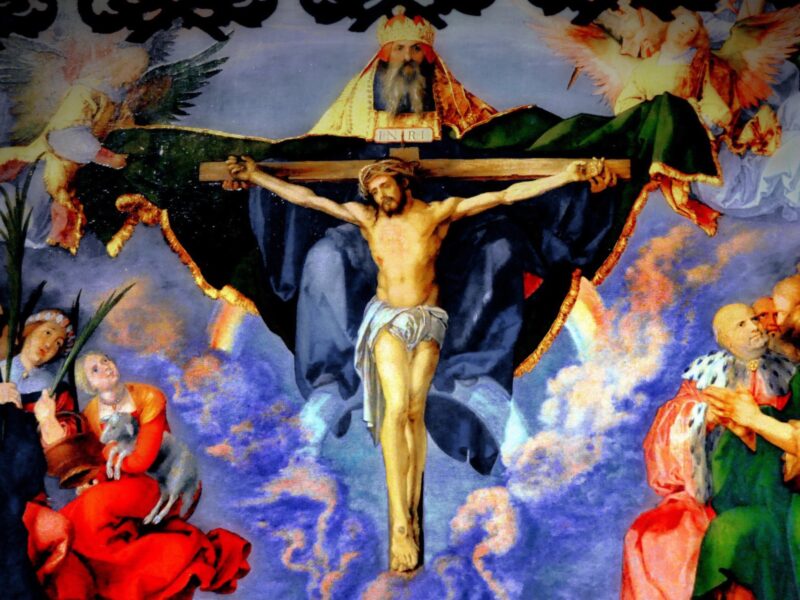
A Mere Symbol?
Holy Thursday. Fr Robert Verrill explains how the Holy Eucharist is the most genuine symbol of all, perfectly signifying that which it contains.
For many Catholics, the thought that the sacraments might be symbolic is rather disturbing. The 20th Century Catholic writer Flannery O’Connor wrote in a letter of an incident at a dinner party where one of the guests explained she thought of the Eucharist as a symbol and implied that it was a pretty good one. To this Flannery O’Connor replied “Well, if it’s a symbol to hell with it.”
This aversion to symbolism is a very understandable response to those who in defending symbolism deny Christ’s substantial presence in the Eucharist. Yet in our defence of orthodoxy, it is very important that we don’t totally dismiss symbolism out of hand. In fact, the decrees of the Council of Trent state that ‘The most holy Eucharist has indeed this in common with the rest of the sacraments, that it is a symbol of a sacred thing, and is a visible form of an invisible grace.’
Now St John’s account of the Last Supper very much invites us to consider the symbolic nature of the Eucharist. From what St John writes in the bread of life discourse a few chapters earlier, it is clear that Christ’s real presence in the Eucharist is absolutely central to his theology. There, Jesus tells the crowds ‘unless you eat the flesh of the Son of Man and drink His blood, you have no life in you’ and when many people leave in disgust, Jesus does nothing to water down what He has just said. Yet when St John comes to describe the Last Supper itself there is no mention of the Institution of the Eucharist at all. Instead St John gives an account of Jesus’ highly symbolic act of washing His disciples’ feet. But what is implicit in this carefully crafted narrative is that the reality of the Eucharist and the symbolism of the Eucharist are intimately related.
The great temptation we face is to pull apart this intimate relationship and either speak of what is purely symbolic, or only of what is really present, but symbolism by its nature is about bringing realities together into one. The word symbol itself comes from the Greek syn- “together” + bole “throwing” so in a symbol we have a throwing together of the signifier and the thing signified.
Now some things are more symbolic than others, and the degree of symbolism depends on the reality of the relationship the symbol establishes between the signifier and the thing signified. If the reality of this relationship is totally absent, then the symbolism is totally undermined and we enter the realms of lies and deceit. For instance, the kiss by which Judas betrayed Jesus was not a real kiss because it had been emptied of its symbolism – by nature, a genuine kiss should embody the loving relationship between the one who loves and the beloved.
Now since the genuineness of a symbol depends on the reality of the relationship between the signifier and the thing signified, Christ’s substantial presence in the Eucharist and the representation of His sacrifice on the cross makes the Eucharist the most genuine symbol of all. For in the Eucharist, when the priest consecrates the bread and wine, signifier and signified are totally united in the subsistent relationship which is Christ’s very self, His eternal procession from God the Father. And likewise, in the Mass, the priest’s words and gestures and Christ’s sacrifice on the cross are totally united in the subsistent relationship which is the Holy Spirit who eternally proceeds from the Father and the Son, for it is on the cross, that the Holy Spirit is poured out into our world.
The two processions of the Trinity are at the heart of reality and express the inner life of God, and it is in our openness to the symbolism of the Eucharist that we become active participants in this reality. But Jesus’ washing of His disciples feet shows us that the symbolism of the Eucharist isn’t just confined to the Mass, but actually continues into our ordinary every day lives. Our small acts of kindness, our gestures of humility and our patient service of one another are now sanctified by Christ’s real presence in the Eucharist and the outpouring of the Holy Spirit. Through the symbolism established in the Last Supper Christ has established us a sacramental people, and so it is our mission to go forth from Mass manifesting the reality of the Trinity to the rest of the world.


